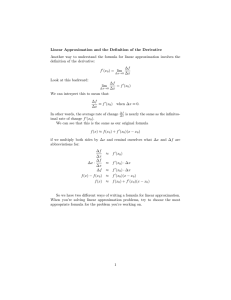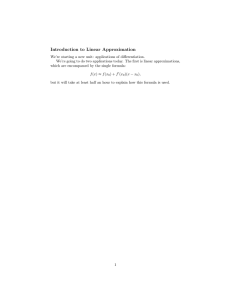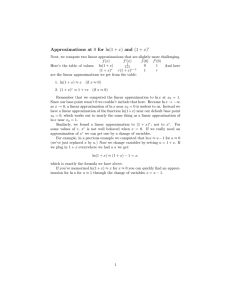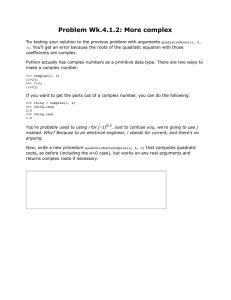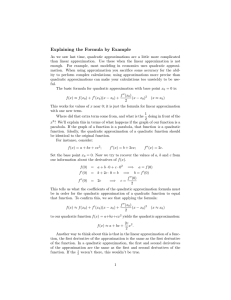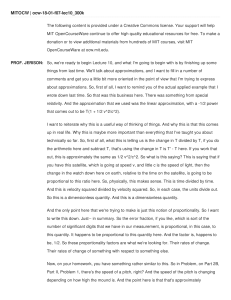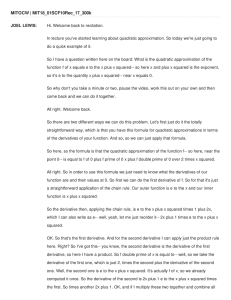The Formula for Quadratic Approximation
advertisement
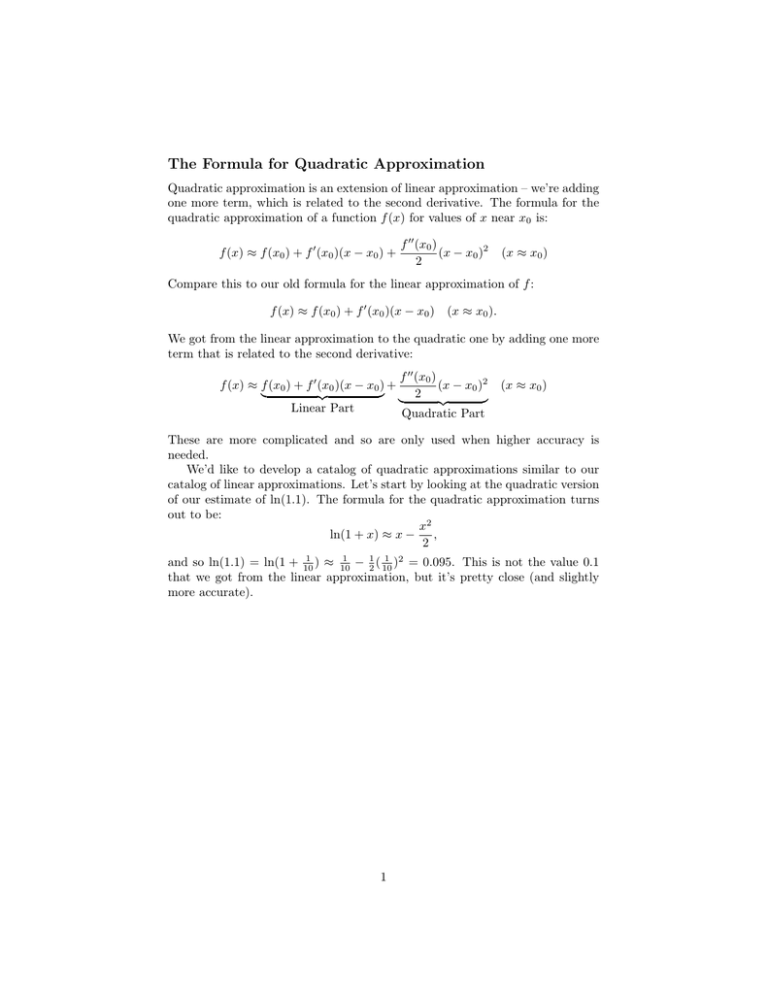
The Formula for Quadratic Approximation Quadratic approximation is an extension of linear approximation – we’re adding one more term, which is related to the second derivative. The formula for the quadratic approximation of a function f (x) for values of x near x0 is: f (x) ≈ f (x0 ) + f � (x0 )(x − x0 ) + f �� (x0 ) (x − x0 )2 2 (x ≈ x0 ) Compare this to our old formula for the linear approximation of f : f (x) ≈ f (x0 ) + f � (x0 )(x − x0 ) (x ≈ x0 ). We got from the linear approximation to the quadratic one by adding one more term that is related to the second derivative: f �� (x0 ) f (x) ≈ f (x0 ) + f � (x0 )(x − x0 ) + (x − x0 )2 � �� � � 2 �� � Linear Part Quadratic Part (x ≈ x0 ) These are more complicated and so are only used when higher accuracy is needed. We’d like to develop a catalog of quadratic approximations similar to our catalog of linear approximations. Let’s start by looking at the quadratic version of our estimate of ln(1.1). The formula for the quadratic approximation turns out to be: x2 ln(1 + x) ≈ x − , 2 1 1 1 2 and so ln(1.1) = ln(1 + 10 ) ≈ 10 − 21 ( 10 ) = 0.095. This is not the value 0.1 that we got from the linear approximation, but it’s pretty close (and slightly more accurate). 1 MIT OpenCourseWare http://ocw.mit.edu 18.01SC Single Variable Calculus�� Fall 2010 �� For information about citing these materials or our Terms of Use, visit: http://ocw.mit.edu/terms.
